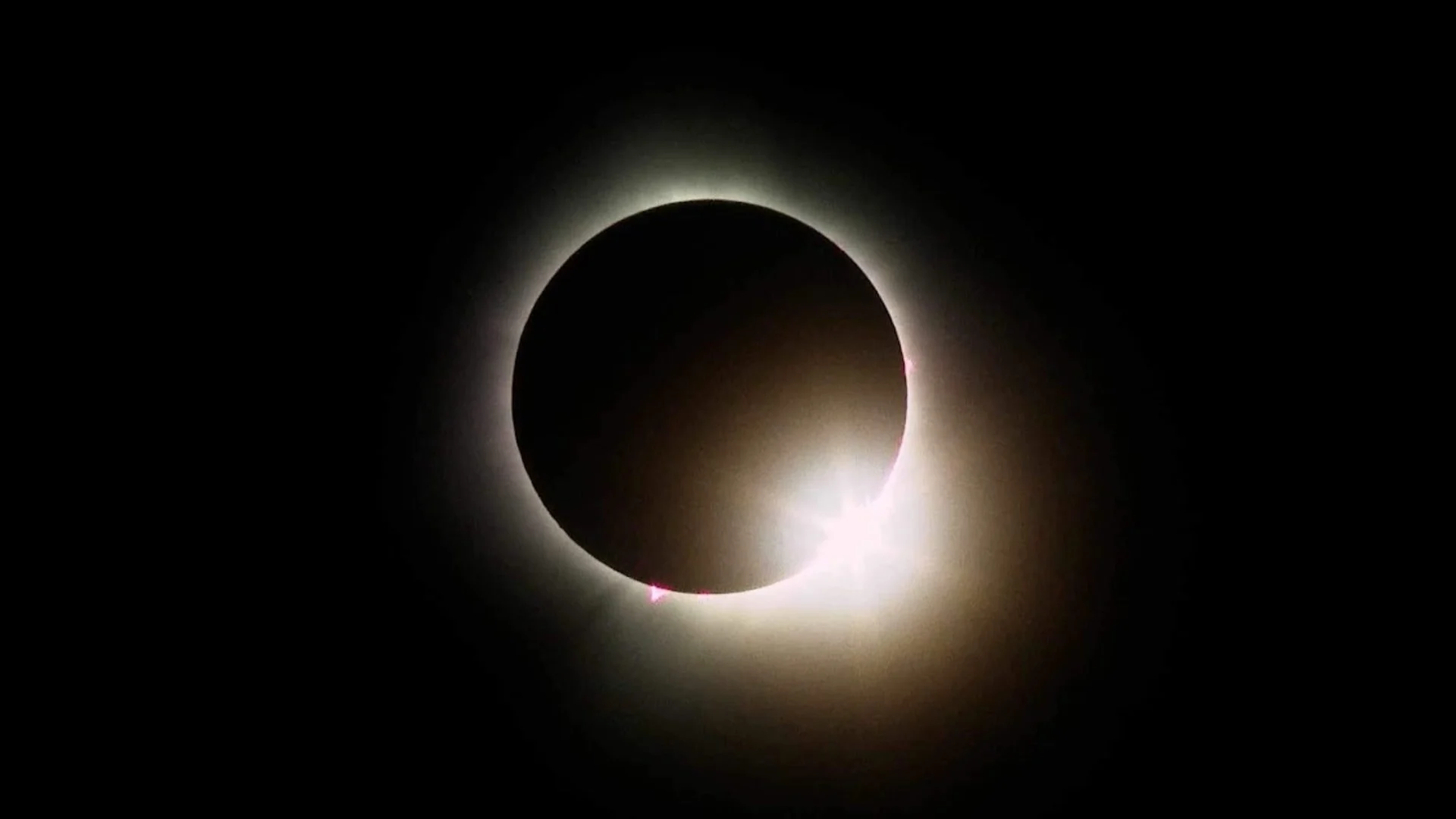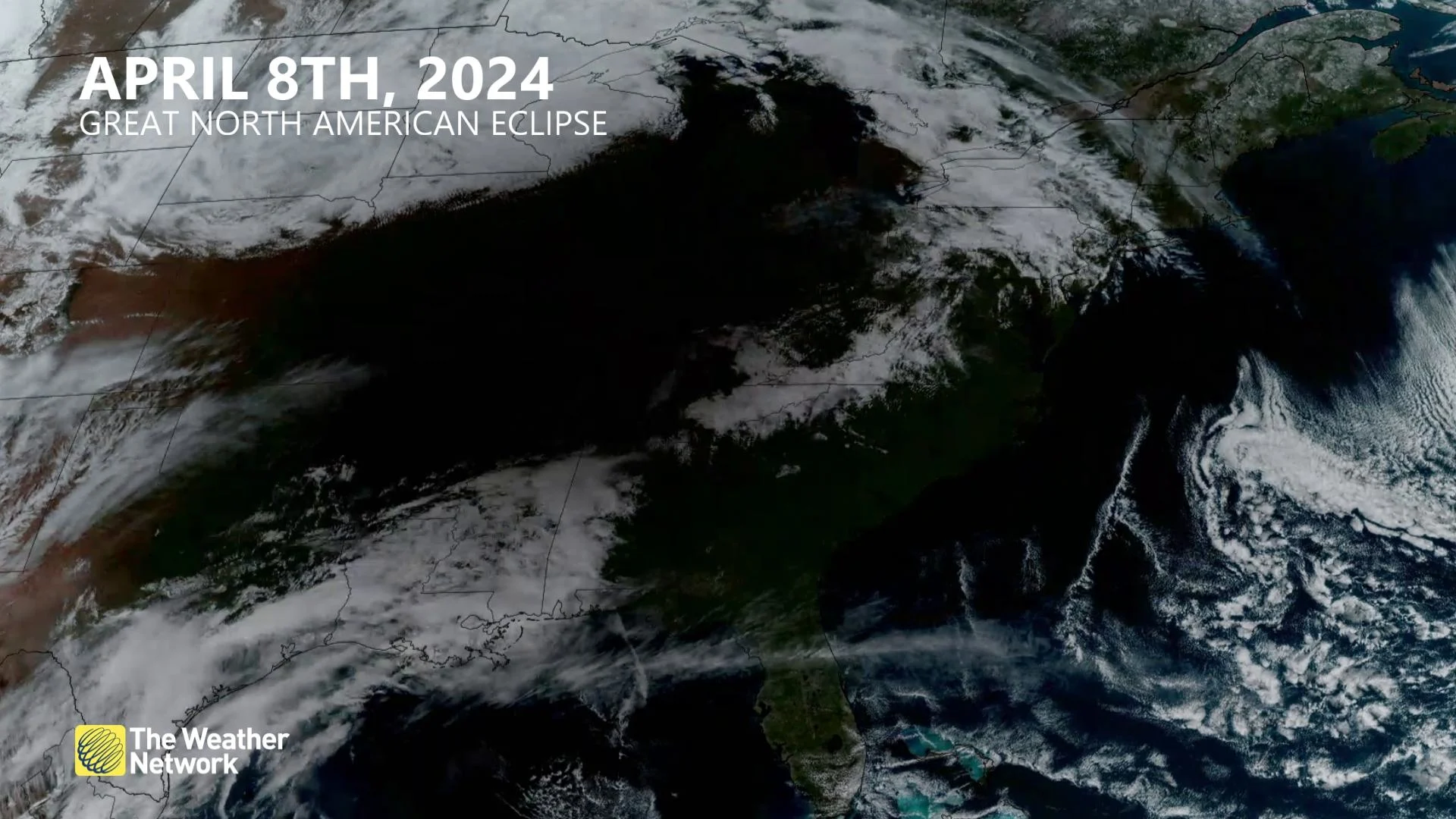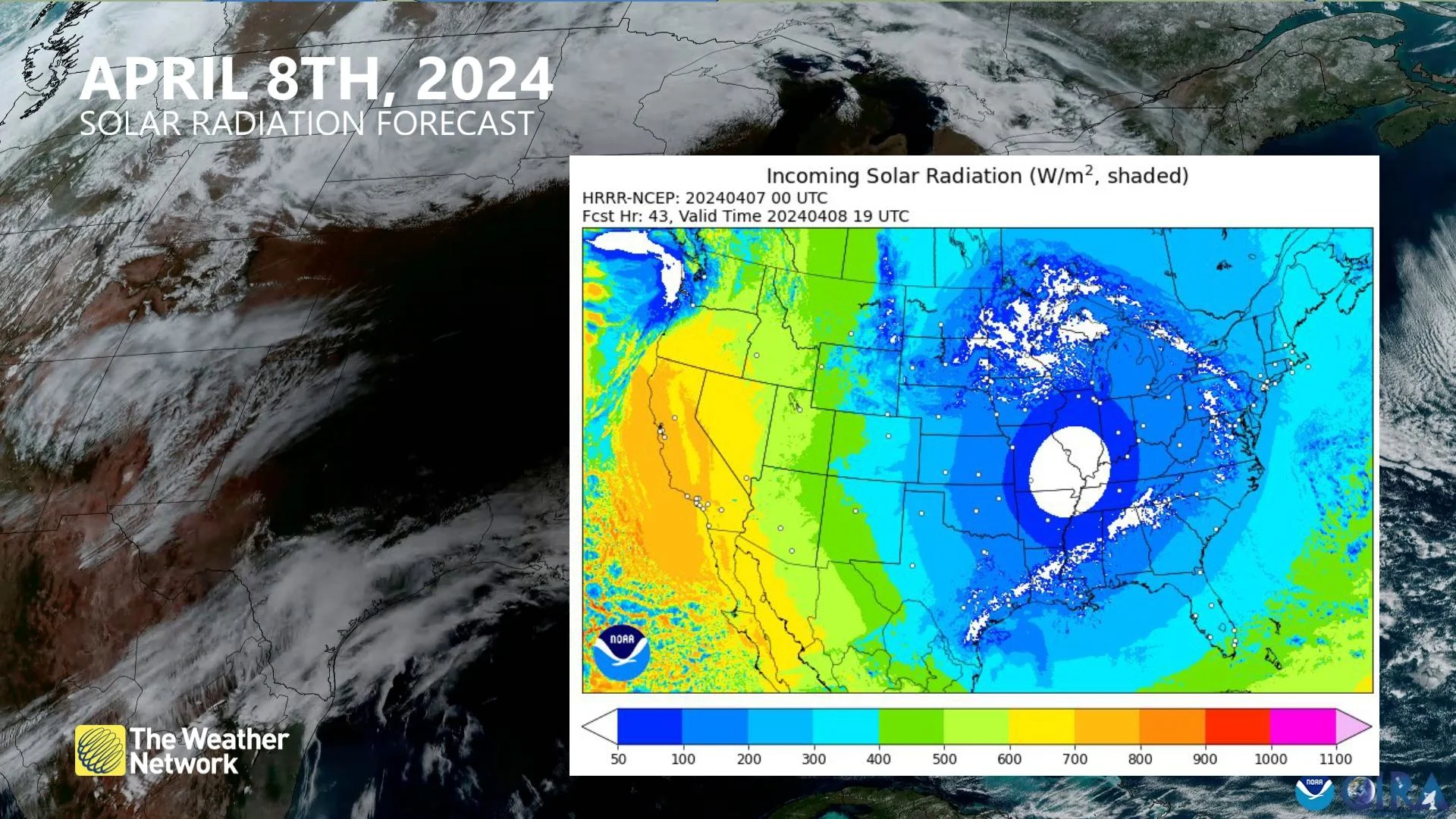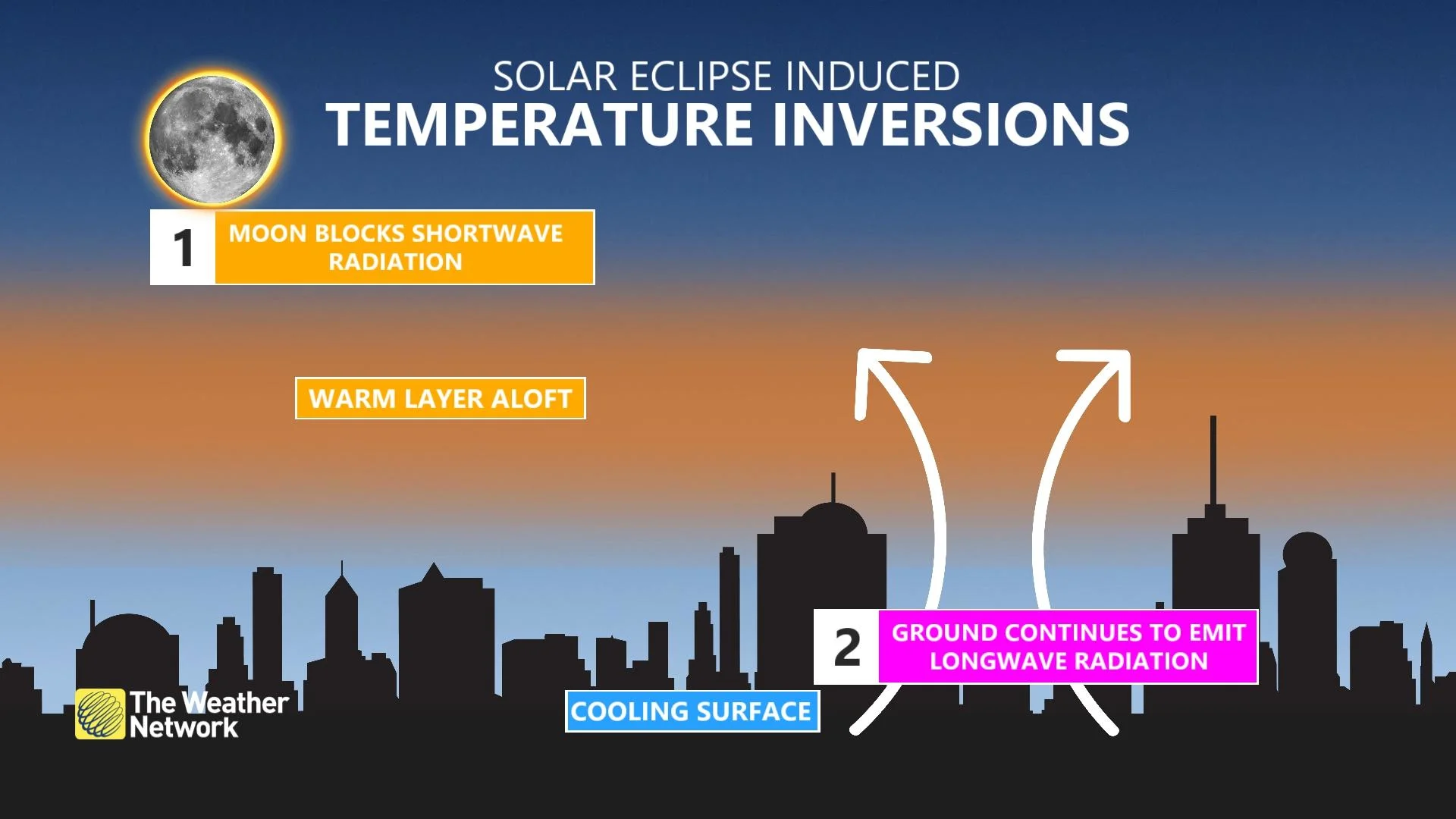
April 8 was the weirdest weather day, thanks to the solar eclipse
Some bizarre, but brief, weather patterns were recorded on Monday as a result of the total solar eclipse
On April 8, the moon’s shadow sliced across North America, fully blocking out solar radiation for tens of millions along the path of totality.
Those effects gradually diminished away from the centre, but a significant drop in solar energy was recorded.
DON'T MISS: IN PHOTOS: Millions gather around the world to witness the total solar eclipse

Some of the most sophisticated and high-resolution computer models have the solar eclipse trajectory baked into the inner workings of the modelling.
What kind of temperature drop did we record in southern Ontario?

The more extreme examples were stations underneath sunshine across parts of southwestern Ontario and southern Quebec. Chatham-Kent, Ont., recorded a temperature drop exceeding 3°C while some places in Quebec documented a more-than 4°C drop, specifically, in Johnville, Que.
Saint-Jovite, Que., recorded the most extreme drop at 6.5°C, something only the most extreme cold fronts are capable of.

It’s not just temperature, either. During totality, there is an appreciable rise in humidity, altering our weather patterns. Eclipses can alter the atmosphere's turbulence, which is generated by surface heating and rising air, temporarily providing a sinking environment that often coincides with sunset.
A very temporary inversion in the atmosphere developed on April 8, when colder air develops at the surface with warmer air aloft, but that mixed out quickly once totality ended.

The decrease in solar radiation can lower wind speeds as the atmosphere temporarily stabilizes, which you might have noticed in your localized surroundings.
The surface of the Earth becomes completely decoupled from the well-mixed atmosphere aloft, meaning winds grind to a halt.
All this from the shadow of the moon.
See you in 2044, Alberta. It will be your time to shine.
Thumbnail courtesy of Jean B. Dumoulin, taken in Quebec.










